What you will need
Lawn fertilising is an essential part of lawn maintenance. To ensure your lawn gets the most out of the process you'll need to gather the necessary materials and equipment before getting started.
We recommend the following materials and equipment is rounded up before you get started:
-
A hand spreader - This typically hold up to 2 kg of product and are great for small residential turf areas or...
-
A drop spreader - These will hold a full 25 kg bag of fertiliser and are ideal for larger lawn areas of 100 m2 or bigger
-
A complete granular lawn fertiliser- Available online or instore at Nutrien Water
Step 1: Choose Fertiliser Product
Lawn fertiliser is comprised of three macro-nutrients, you will notice this on the packaging denoted with an N-P-K. This stands for nitrogen, phosphorus and potassium, respectively.
You can get granular or liquid fertiliser, but a cost-effective way is to use granular.
All lawns require these macronutrients to thrive however this may vary depending on the type of grass and quality of the soil.
Each macronutrient has a specific function, and understanding these functions goes a long way to helping you choose the most suitable product.
The most effective way to choose this fertiliser is to take a sample of your soil into a lab and get it tested. This will determine exactly what nutrients are needed however, this is impractical for the vast majority of us, so it's recommended to use the following information to choose your product.
- Nitrogen is responsible for health of the plant leaf and gives it that lush green colour. Nitrogen is generally needed in higher quantities than the others.
-
Potassium is responsible for keeping the plant resilient to disease and drought. This is generally applied at half of the nitrogen quantity.
-
Phosphorus is food for the roots and supports a healthy root system. Phosphorus is only required in very small amounts to be effective e.g., 1% of total content.
Luckily some excellent products on the market include all the essential nutrients in quantities suitable for all applications. See some of our recommended products below:
The Premium Pick- Eco Growth Eco-Prime Emerald is a complete fertiliser with trace elements and all the nutrients needed for healthy grass.
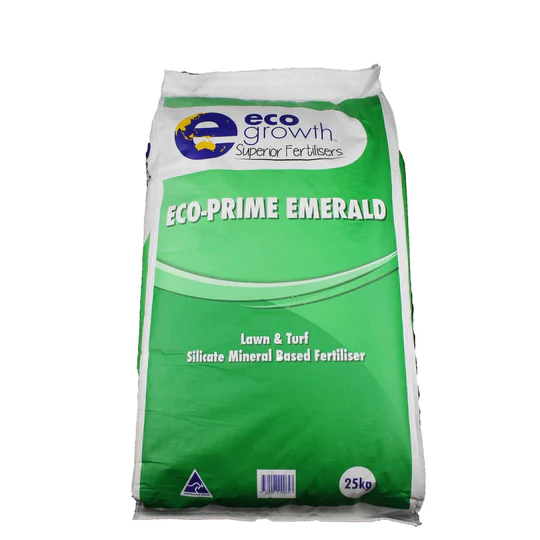
The All Rounder- Nutrien Turf & Nutrien Turf Plus are lawn care staples for contractors and suitable for every lawn variety. Packed with the essential nutrients to keep your lawn thriving year round.
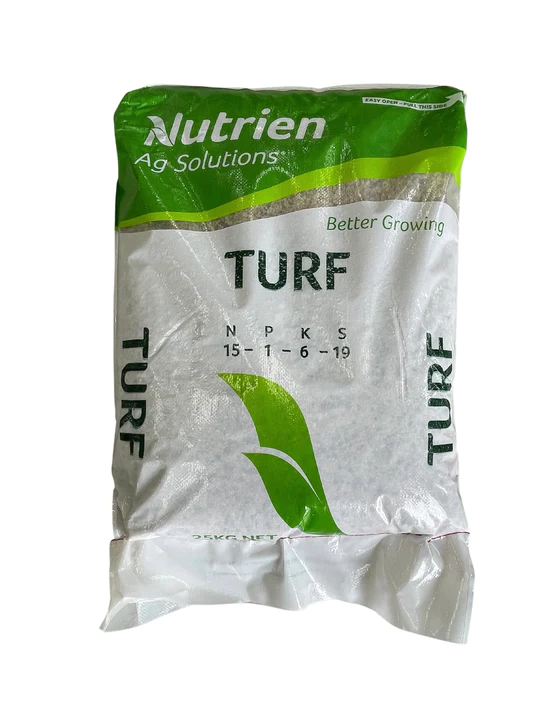
Step 2: Apply Wetting Agent to Lawn
Applying fertiliser is essential for healthy grass, however, most soils are less-than-ideal and require some treatment prior. To do this, you need to apply a product to help the water and nutrients penetrate the soil deep into the roots.
If you have sandy, hydrophobic soils we recommend a combination of wetting and retaining agents such as Aqua Force and Bi-agra throughout spring and summer.
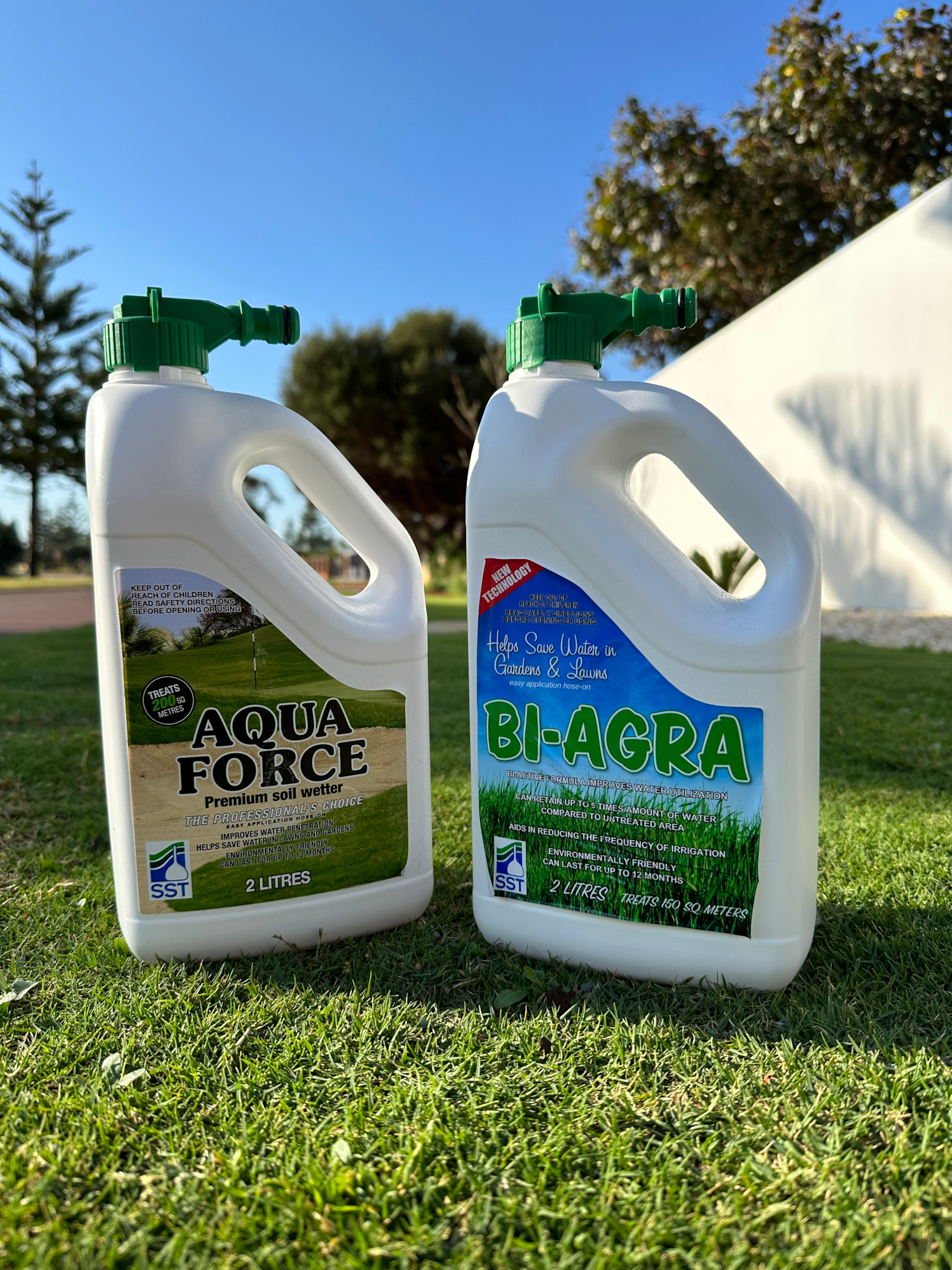
If you have hard, clay soils, we recommend a high-quality wetting agent such as Eco Growth Eco-Wet.
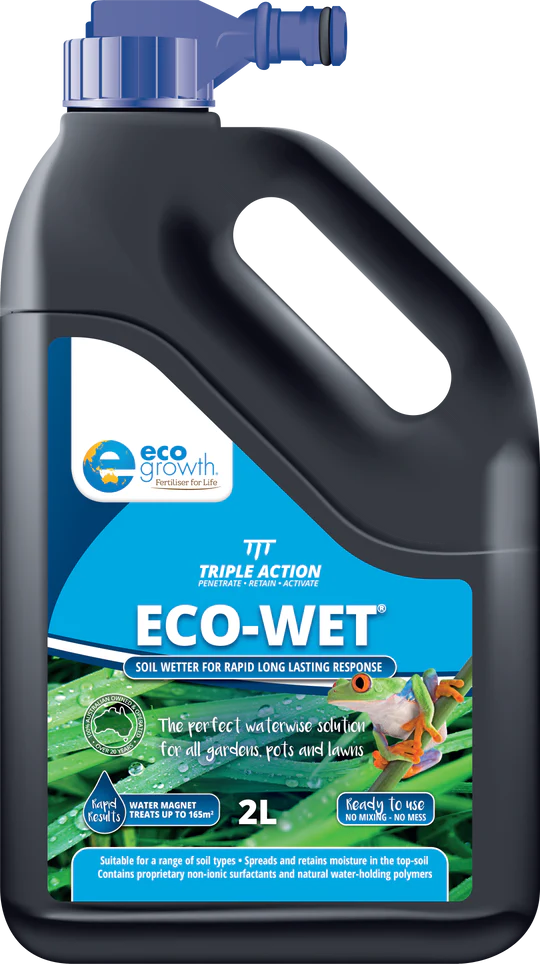
Pro-tip: Use a seaweed extract/humate liquid fertiliser at the same time to add some organic matter back into the soil
Step 3: Spread Fertiliser Evenly Across Lawn
Now you're ready to apply the fertiliser evenly across your lawn.
What equipment you use to do this will be dependent on the size and layout of your lawn however the below guide will help you get the job done.
-
Measure your lawn area in square metres to calculate the total area.
-
Get the application rate off the fertiliser bag/tub e.g., 250 kg per hectare.
-
Calculate the total amount of fertiliser you need to apply evenly across the lawn.
-
Fill your fertiliser spreader (hand or drop spreader) and set it to the lowest setting.
-
Do a single pass across the whole lawn at a medium walking pace
-
Work out how much fertiliser was used in the single pass and adjust the setting, so all the product is used on the next run (this isnt an exact science, do your best to spread evenly).
Pro-tip: If buying a 25 kg bag, use a smaller tub 2-5 kg to measure out the quantity you need. Also, make sure you blow down all hard surfaces after spreading to avoid staining.

Step 4: Water in thoroughly
Now you have spread the fertiliser it's time to water it in.
For those lucky enough to have an automatic irrigation system, switch it on and run it long enough to apply at least 10 mm of water. If you have spray nozzles this will be 15 minutes, if you have rotary nozzles this will be 50 minutes.
If you are watering in with the hose, make sure every part of the lawn gets a thorough drink.
Pro-tip: Put down some catch cups evenly across your lawn and make sure all areas are getting 10 mm of water. Catch cups can be obtained free from your local Nutrien Water branch.
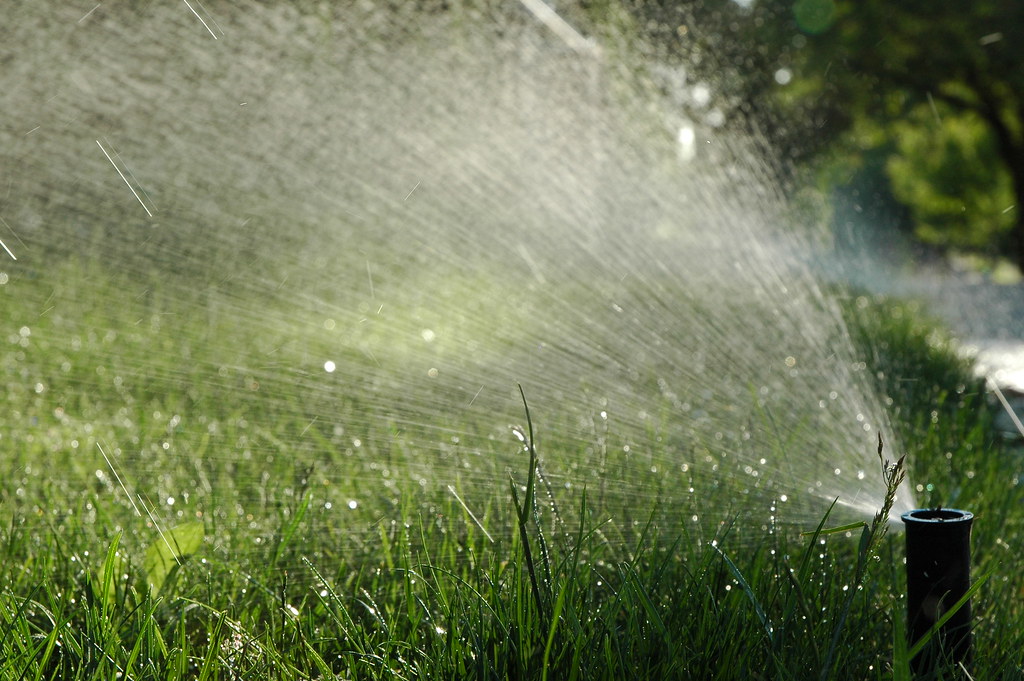
How often to Fertilise your lawn?
The frequency of fertilising is dependent on the type of grass and the condition of soil however, over many years of experience here are our recommended frequencies:
-
Couch grass such as Wintergreen
-
Fertilise every six weeks September to November, and
-
Fertilise every eight weeks December to March.
-
This should come to a total of five applications per year.
-
-
Kikuyu and Buffalo grass such as Village Green, Palmetto and Sir Walter
-
Fertilise every eight weeks September to March.
-
If growth is excessive in Summer period, skip one application.
-
This should equal a total of four applications per year.
-
The theme is regular feeding throughout the growing season (Spring, Summer, Autumn) to promote growth and nothing in the colder months to avoid stimulating weeds throughout winter. For more in-depth information, check out our 'How often to fertilise your lawn' blog post.

The information provided in this publication is intended as a guide only. No one should rely upon the information contained in this publication without appropriate professional advice regarding relevant factors specific to your situation.






